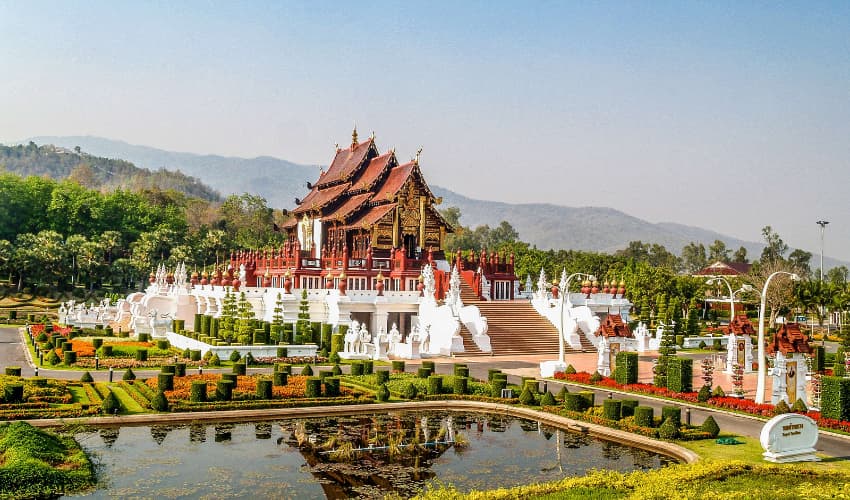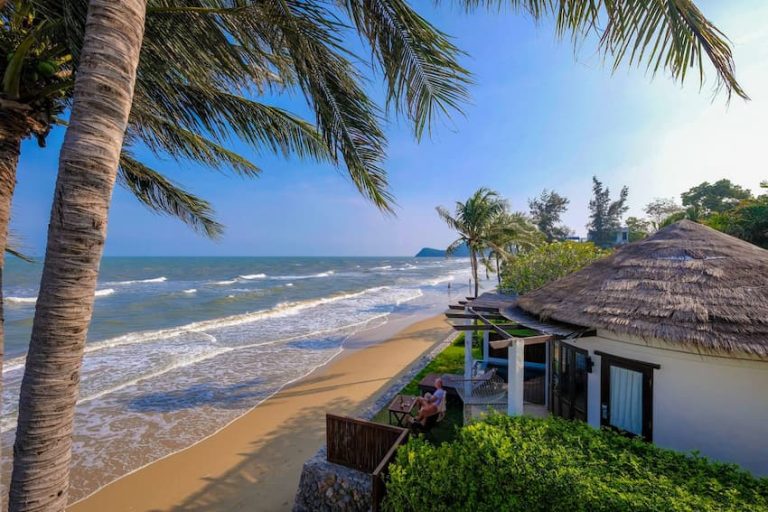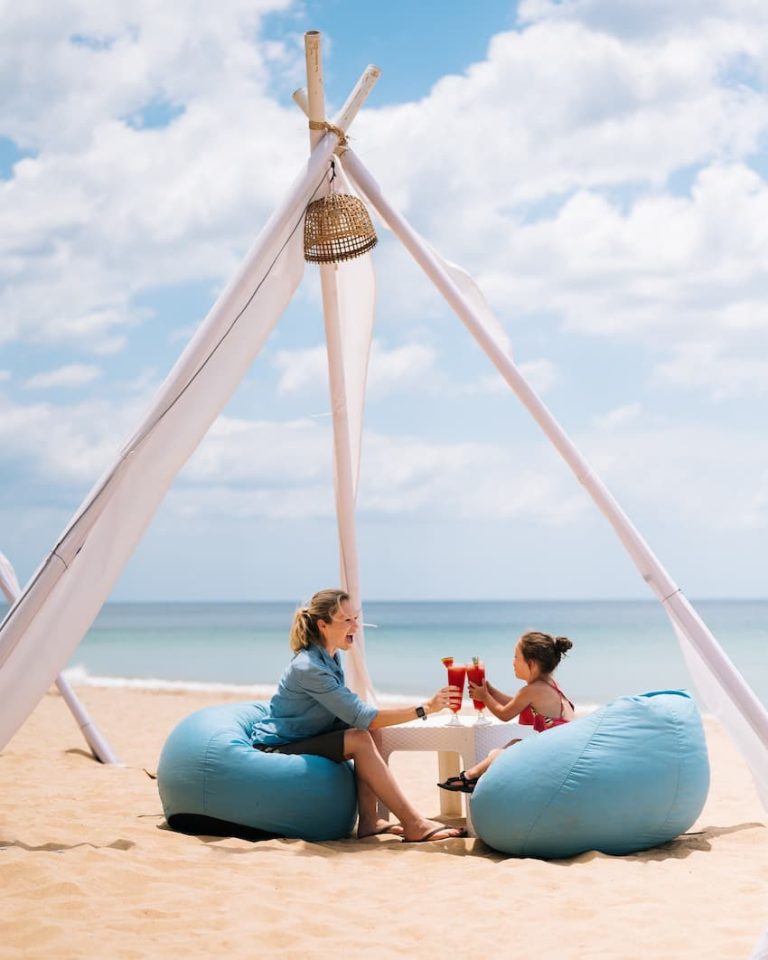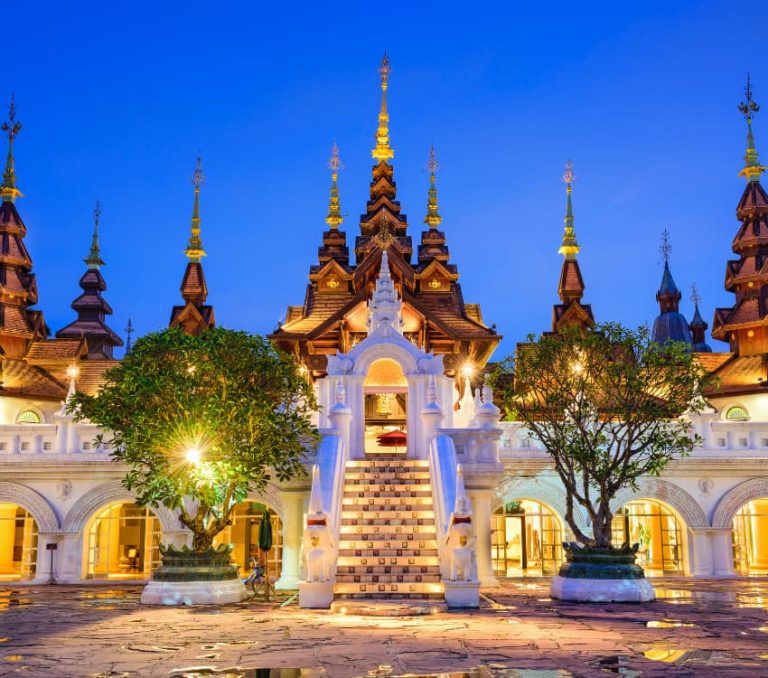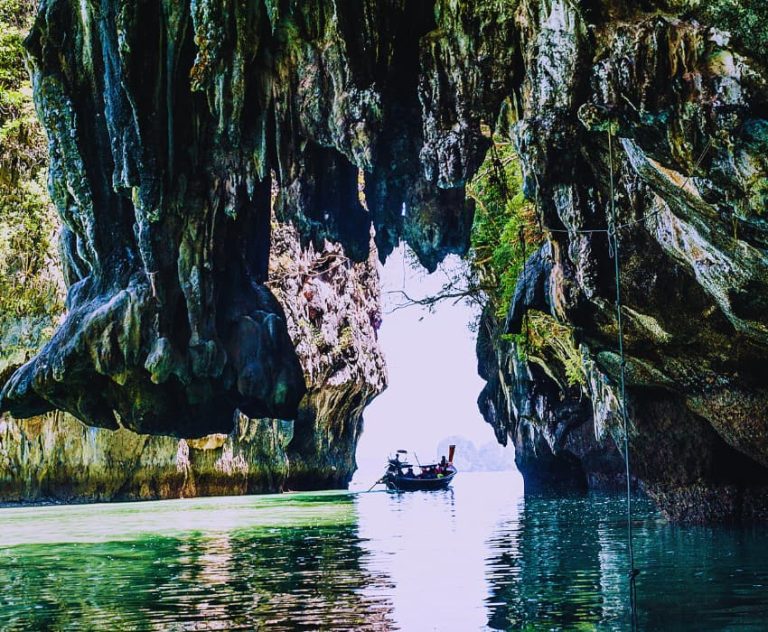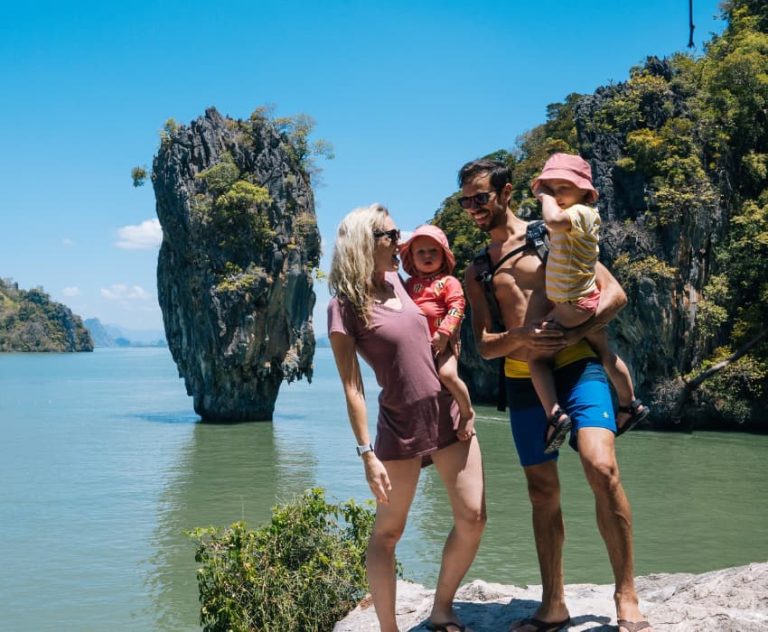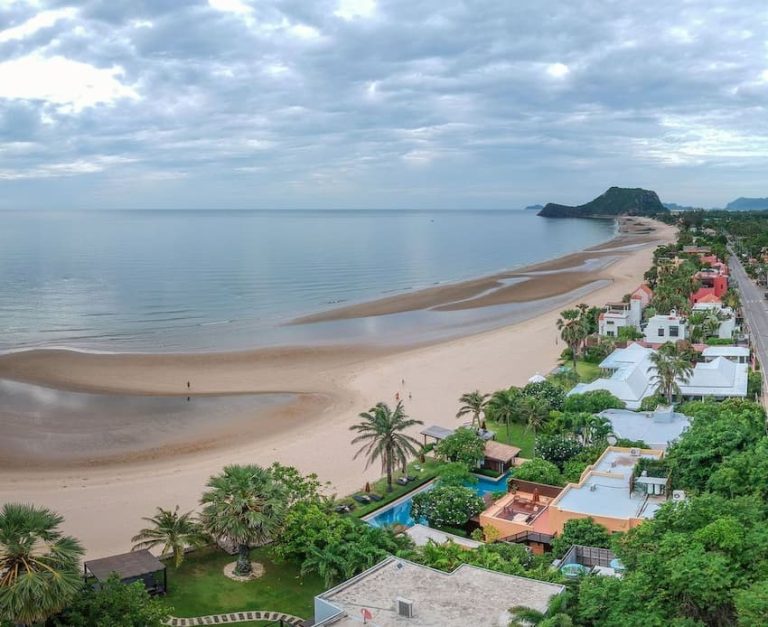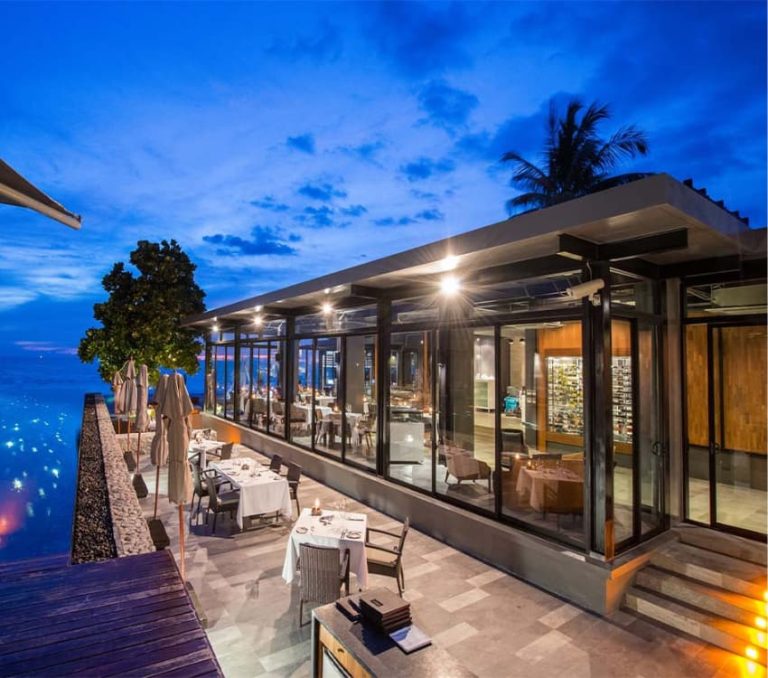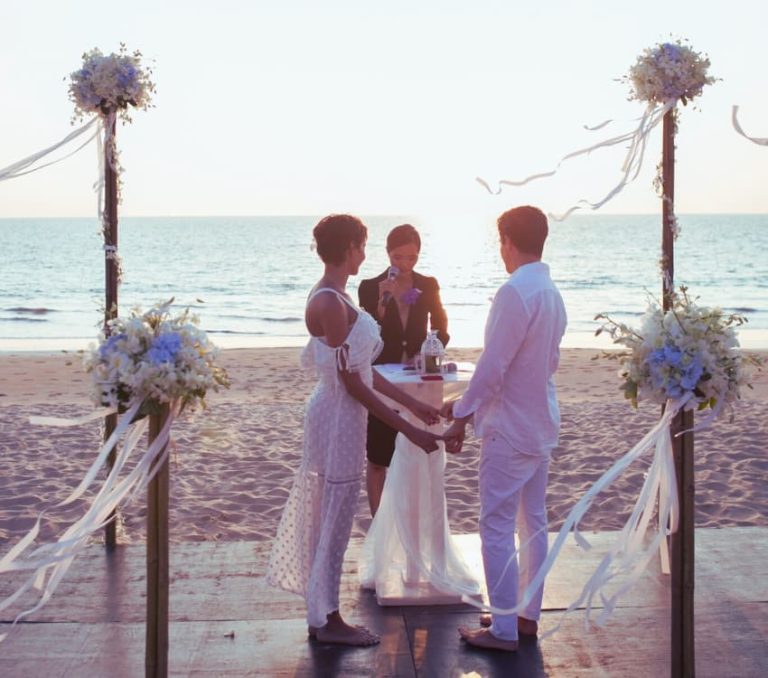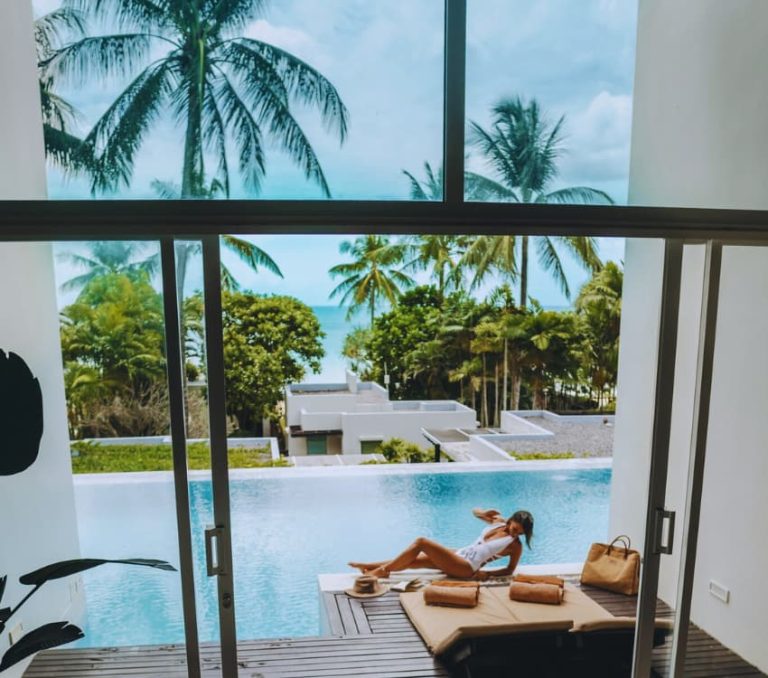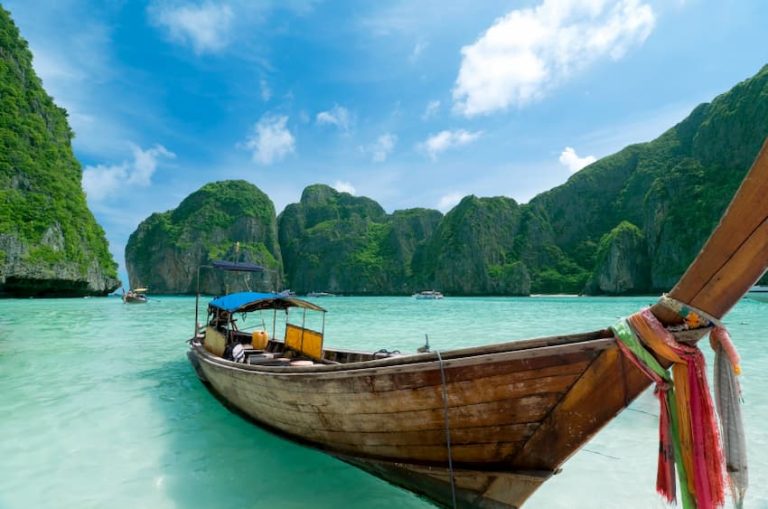In northern Thailand, Chiang Mai is steeped in history and rich in culture and traditions. The numerous temples, structures and buildings throughout the region are a testament to this, with centuries of stories and legends to tell. While these ancient places are highly valued and much visited by both locals and visitors to the area, some more recent buildings have as much of a place in history. One such highlight of Chiang Mai is the spectacular Phra Tamnak Phu Phing, commonly called Bhubing Palace.
Built as recently as 1961, Bhubing Palace is the winter residence of the Thai Royal family when they visit the northern part of the country, usually between January and March. In later years, it also played a vital role in providing guest accommodation for state dignitaries visiting from other countries.
Its location in the centre of the beautiful Doi Suthep-Pui National Park adds to the charm of this regal landmark. At the same time, the cool mountain air promotes the growth of the many exotic plant species that attract visitors to the beautifully landscaped gardens.
The Buildings of Bhubing Palace
The palace compound comprises several buildings and expansive grounds well laid out with footpaths and flower gardens, affording visitors a glimpse into the lifestyle of the Thai royal family.
When Bhubing Palace was built, it consisted of only the royal residence and the guest house and took just five months to complete. Additional buildings have been added in subsequent years, each with a specific function, but all in keeping with the aesthetics of the compound.
The main palace building was built in a typical northern Thai style called “ruen mu”, which means “group of houses”. Built on stilts, the building’s top floor is the official residence for the Royal family, while the ground floor provides living quarters for the accompanying entourage.
The guest house for royals and dignitaries visiting from other countries is a two-storey structure called Ruen Rob Rong which, although resembling a log cabin, is impressive in its décor and design.
Other log houses built from eucalyptus were added thirty years later in the 1990s on the opposite side of the complex to the palace. The first one, Phra Tamnak Siri Song Nakornbing, took just four months to complete from laying the initial foundations in September 1991. This structure bordered on experimental as the Queen used it to study how well eucalyptus fared in building construction. It appears to have been a successful “experiment”, as another eucalyptus wood house was constructed in 1993. This second one, Phra Tamnak Payak Sathit, serves as the seasonal residence of His Royal Highness Crown Prince Vajiralongkorn. Lastly, Ruen Peek Mai was built as the seasonal residence of Her Royal Highness Princess Chulabhorn.
The late Princess Mother, Her Royal Highness Princess Sri Nagarinda, also had a dedicated seasonal residence on the property. Phra Tamnak Phrueksa Wisuthikhun is a two-storey building on a small hill with unsurpassed views over the grounds of the palace complex. This structure showcases a combination of North and Central Thailand architecture and styles.
Two smaller non-residential buildings grace the palace grounds. The teak Pha Mon Pavilion stands regally atop a small hill in the fern garden, having replaced the initial bamboo structure from years gone by. This pavilion is used for royal dinners and entertainment. A private shrine called Hor Phra is at the far side of the grounds. This religious structure houses a Buddha image and is used by the Royal family for prayer.
The Palace Grounds
While the royal palace buildings may not be open to the public all year round, the spectacularly landscaped grounds are well worth a visit. The grounds showcase different blooms throughout the four seasons, so you’ll likely have a different experience each time you visit.
Central in the grounds is the large reservoir, which, although functional, is a standout feature of the gardens. It’s bordered on one side by both formal and informal beds of flowering plants, while a large fountain in the centre of the reservoir acts as a focal point and promotes the garden’s calm atmosphere.
One of the standout features of the palace grounds is the Suan Suwaree rose garden. Suan Suwaree was built at the request of Her Majesty the Queen Suwaree in remembrance of the late former lady-in-waiting Thanpuying Suwaree Taepakam. While roses are the dominant plant in this expansive garden, a myriad of other plants and flowers are dotted among the rose beds, including orchids, ferns and camellias.
Another specifically landscaped part of the grounds is the Fern Garden, which started in 1993. This area is home to many varietals of fern indigenous to Thailand that were accumulated from around the country and planted to create this organic garden. It is also here that you can view the Pha Mon Pavilion.
The grounds are well designed, with footpaths providing easy access throughout the various gardens.
It’s important to remember that although a tourist attraction, Bhubing Palace is an official residence and basic etiquette should always be observed. This includes dressing appropriately and respectfully.
Although Bhubing Palace is without the centuries of history that other landmarks in Chiang Mai boast, the natural surroundings complement its unique beauty giving it an appeal that is hard to resist.
FAQs:
Q: What are the opening hours of Bhubing Palace?
Bhubing Palace is open to visitors from 8:30 AM to 4:30 PM daily, except during royal ceremonies or other special events.
Q: Is there an admission fee to enter Bhubing Palace?
There is an admission fee to enter Bhubing Palace. The fee for foreign adults is 50 baht, while the fee for Thai adults is 20 baht. Children under 10 years old can enter for free.
Q: Can visitors enter the palace buildings?
Visitors are not allowed to enter the palace buildings. However, you can take photos of the buildings outside and explore the surrounding gardens and grounds.
Q: Are there guided tours available at Bhubing Palace?
There are no guided tours available at Bhubing Palace. However, informational signs throughout the gardens provide information about the history and significance of the palace.
Q: Can I bring food into Bhubing Palace?
Visitors are not allowed to bring food or drinks into Bhubing Palace. There are food and drink stalls available outside the palace entrance.
Q: Is there a dress code for visiting Bhubing Palace?
Visitors are expected to dress modestly and appropriately when visiting Bhubing Palace. Shorts, sleeveless shirts, and revealing clothing are not permitted. Shoes must be removed before entering any buildings.
Q: Can visitors take photos at Bhubing Palace?
Visitors are allowed to take photos at Bhubing Palace. However, photography is not permitted inside the palace buildings.
Q: Are there restrooms available at Bhubing Palace?
There are restrooms available for visitors at Bhubing Palace.
Related Articles
- Wat Suan Dok
- Wat Umong Suan Phutthatham
- Wat Pha Lat
- Chiang Mai Zoo
- Seven Chiang Mai Temples Worth A Visit
Aleenta Retreat
Chiang Mai
Chiang Mai
189 Soi Ban Mai Lang Mo 18,
Suthep, Muang Chiang Mai District,
Chiang Mai 50200
T: +66 (0)52 090 333

